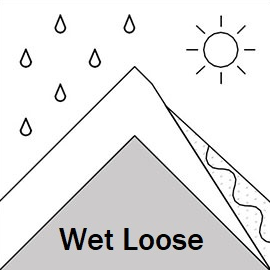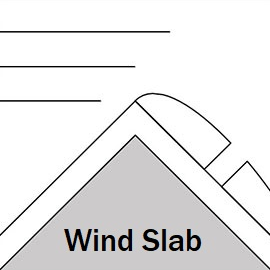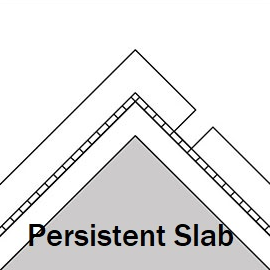Gudauri
Natural avalanches are unlikely, human-triggered avalanches are possible. Small avalanches in specific areas, or large avalanches in isolated areas.
Lower elevation slopes are heating up on all aspects, with east, south and west aspects most affected. These same aspects are also getting warm at higher elevations. A mix of sun and cloud can trap even more heat and create a 'greenhouse effect', further increasing the likelihood of wet avalanches. The wind slabs formed during the last storm are now difficult to trigger. Be aware of slopes with shallow snowpacks, as there are buried crust/facet layers that may react to skiers - these are gaining strength but have not been neutralised just yet.
Forecast issued at: 12 February 2024 00:00
Forecast valid until: 14 February 2024 00:00
Forecaster: Manu Greer
High Alpine
> 2600m
2 Moderate
Heightened avalanche conditions on specific terrain features. Evaluate snow and terrain carefully; identify features of concern.
Alpine
2000m - 2600m
2 Moderate
Heightened avalanche conditions on specific terrain features. Evaluate snow and terrain carefully; identify features of concern.
Sub Alpine
< 2000m
2 Moderate
Heightened avalanche conditions on specific terrain features. Evaluate snow and terrain carefully; identify features of concern.
Avalanche Problems
Loose Wet

Warm temperatures and direct solar radiation increase the likelihood of wet-loose avalanches, both skier-triggered and natural, especially from mid-day onwards and in the afternoon. Some of these could be big enough to bury you especially in valleys or hollows - watch out for these 'terrain traps'!
| Sensitivity | The specific avalanche problem type is reactive to human rider triggers. Easy to trigger with ski cut. |
| Distribution | Specific areas, with common characteristics. Evidence for instabilities exists, but it is not obvious and finding it requires careful observations. |
| Time of Day | Afternoon |
| Trend | No change |
| Confidence | Moderate |
Wind Slab

Wind slabs may be reactive to large loads, especially in the high alpine near ridges. Avoid steep and unsupported eastern slopes.
| Sensitivity | The specific avalanche problem type is difficult to trigger with a human rider. |
| Distribution | A few, isolated locations; evidence for instabilities is rare and hard to find. |
| Time of Day | All day |
| Trend | Improving |
| Confidence | Moderate |
Persistent Slab

Weak, facetted snow layers have been observed in the region at all elevation bands, around buried crusts and in areas with shallow snow depth. Where these weak layers have enough dense snow above them, medium to large avalanches could be started. The problem is worse in the north of the region where the snow is shallower. Be cautious in shallow snowpacks, and take "whumpfs" as a clear sign of instability - and the presence of a weak layer that can easily slide in steeper terrain.
| Sensitivity | The specific avalanche problem type is difficult to trigger with a human rider. |
| Distribution | Specific areas, with common characteristics. Evidence for instabilities exists, but it is not obvious and finding it requires careful observations. |
| Time of Day | All day |
| Trend | No change |
| Confidence | Moderate |
Recent Avalanches and Snowpack
Recent avalanche activity: 8 February - several small (size 1) loose wet avalanches on west side of Sadzele 7 February - multiple size 2 - 3 wind / storm slab avalanches seen Lomisa - Miketi ridgeline, E aspects 2100 - 2300m. 4 February - size 1 wind slab near Sioni valley, 2000m, N aspect - failed on weak snow near the ground.
Glide slabs continue to be active on multiple aspects (more commonly E, S and W) below about 2600m, some up to size 2.
Snowpack: Previous wind slabs have mostly settled but may remain active on steep slopes. Melt-freeze crusts can be found at lower elevations and sunny aspects, and there can be weak snow layers around these crusts. In northern areas (North of Kobi Valley), the snowpack is thinner and critical weaknesses around crusts and at the ground were observed. Watch out for weak, sugary (faceted) snow in areas where the snow is shallow, and crust/facet layers. Warm temperatures in recent days should be gradually strenthening the weak snow especially below 2000m, but this process does not happen quickly. Check out recent snow profiles (or add your own!) at snowpilot.org
Weather
The last couple of days have been very warm with light winds. The warm tempertures continue Monday and Tuesday with a mix of sun and cloud and light SW winds. Freezing level around 3000m.
Disclaimer
Our avalanche forecasters are internationally qualified and experienced professionals, and data is provided by skilled observers. We encourage you to make your own observations and decisions, without relying solely on our forecast, since any forecast is a generalised 'best guess', and in certain cases it might be inaccurate. We can not be held liable for any actions you take in the backcountry that may result in injury, loss or death.